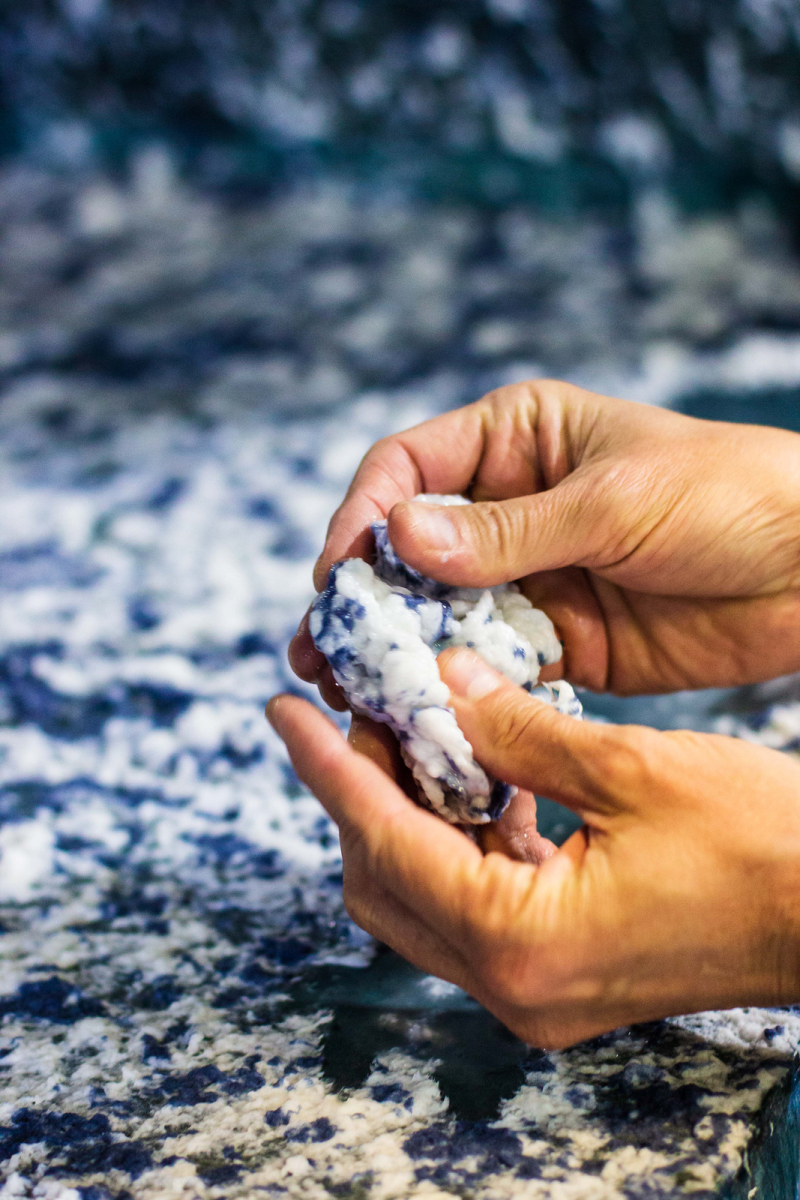用棉纺织废料循环造纸已经有几百年历史了。今天,纺织废料比以往都要多得多。这些棉纤维柔软但有韧性,能做出非常漂亮的纸张。Mohawk Renewal回收棉系列来源于两种棉纤维:白T恤和蓝色的丹尼碎布。
在Ohio Franklin的纸浆和造纸公司(Cheney Pulp and Paper Company)重走美国造纸业的根基这个举措并非第一次实施。自1924年,当Howard Cheney收购并将一家磨坊转型为用纺织厂废料的棉碎布造浆开始,这个商业模式一直持续至今。第四代家族Cheney的长孙Mark Snyder掌管公司后,这家公司通过与Mohawk纸厂合作,业务范围又扩展了。
Cheney的回收棉浆用来制造Mohawk Renewal T-Shirt White和Denim系列,也给了棉纺织废料第二次生命。从每年送去填埋场的成千上万吨纺织废料中的t-shirt和牛仔碎布转化来的这些浆,在造纸的过程中没有再进行漂白和添加任何染料。

Cheney说:“很多公司做很普通的平平无奇的大纸,而Renewal系列将是一款非常特别的,看起来摸起来都像布料,而色彩饱满,给你实实在在的体验的一款纸张”。
这些新的产品在曾经辉煌一时的国家纸浆和造纸行业中将重新占据一席之地。虽然用棉纺织纤维做底纸已经被广泛应用,全世界很多国家使用它作为银行通知单和货币纸,包括美元,棉纸还是一个利基市场。Mohawk和Cheney的合作找到了不同于之前的应用市场,我们将棉纺织废料变成一些非常有价值的东西。
用棉来造纸是从碎布开始的,尤其是一些大型布料厂的纺织废料中开始。Cheney说“时尚趋势经常决定着哪种布料将更加普及,但是找到denim和T恤布料却一点都不困难。这些材料送达的时候是按1000磅一包,都是2-3英寸大小的碎布,员工门手动挑出那些塑料等,确保里面是100%的棉。然后,经过高温,水和时间,这些碎布慢慢转变为浆,进而变成纸张。
.png)
“我们通过对纺织废料的循环使用并创造出新东西来缓解森林和填埋场的压力。”
Cheney说“这整个过程展现了积极的社会效应”,“我们通过对纺织废料的循环利用并创造出新的东西来缓解森林和填埋场的压力。”为Mohawk Renewal全线系列提供可持续发展的浆也帮助了这个家族企业和其40位员工,鼓励美国工业。
随着快时尚的兴起,产生了越来越多的棉废料。就1999到2009的十年间,全球纺织废料就涨了40%,如果将它们置于填埋场需要200多年的时间才能分解。但是有目标的将这些碎布变成艺术纸,造福地球,这项事业永不过时。


For centuries, cotton textile waste was recycled to make paper. Today, there is more textile waste than ever. Strong, yet soft, these cotton fibers make beautiful paper. Mohawk Renewal Recycled Cotton uses two sources for its cotton fiber: white t-shirt trim and blue denim thread.
At the Cheney Pulp and Paper Company in Franklin. Ohio, returning to the roots of American papermaking isn't new. It's been the business model since 1924, when Howard Cheney purchased and retrofitted a grain mill to make pulp out of cotton rag, a fabric industry waste product. Four generations later, with Cheney's great-grandson Mark Snyder at the helm, the company's work is newly relevant, thanks to a manufacturing partnership with Mohawk.
Recycled Cotton pulp from Cheney is used to make Mohawk Renewal T-Shirt White and Denim papers, giving cotton textile waste a second life. Made from t-shirt and denim scrap diverted from the millions of textile waste sent to landfills every year, these pulps remain unbleached and require no dye in the papermaking process.
"A lot of companies make generic, bland, commodity paper," says Cheney. "This Renewal paper will be unique, with a look and feel almost like cloth, with rich color, and a sense of permanence."
These new products also breathe new life into a process that was once a centerpiece of the nation's pulp and papermaking industry. Though it's niche now, cotton textile-based paper was widely prevalent; national governments around the world still use it for banknotes and currency, including U.S. dollars. The Mohawk and Cheney collaboration has found a different way to turn cotton textile waste into something of great value.
Creating paper from cotton starts with scraps, specifically textile waste from large clothing manufacturers. Fashion trends often dictate what kind of scraps may be common, Cheney says, but finding bits of denim and T-Shirt isn't difficult. The material arrives in 1,000 pound bales of two-by-three inch clippings, which staffers sort by hand to weed out synthetics making sure everything used is 100 percent cotton. Then, using a combination of heat, water, and time, those scraps are transformed into pulp which becomes paper.
“We’re taking pressure off forests and landfills by reusing textile waste and making something new with it.”
"This whole process reinforces positive social behavior," says Cheney. "We're taking pressure off forests and landfills by reusing waste to make something new with it." Making this sustainable pulp for the new Mohawk Renewal range of papers has also helped the bottom line of this family business and its 40 employees, bolstering American industry.
With the rise in fast fashion, there's more cotton waste being generated than ever before. Between 1999 and 2009, the global volume of textile trash rose by 40 percent, discards which take 200 years or more to decompose and release methane as they sit in landfills. But turning scraps into fine paper with a purpose, and benefit for the planet, is a business model that won't go out of style.
